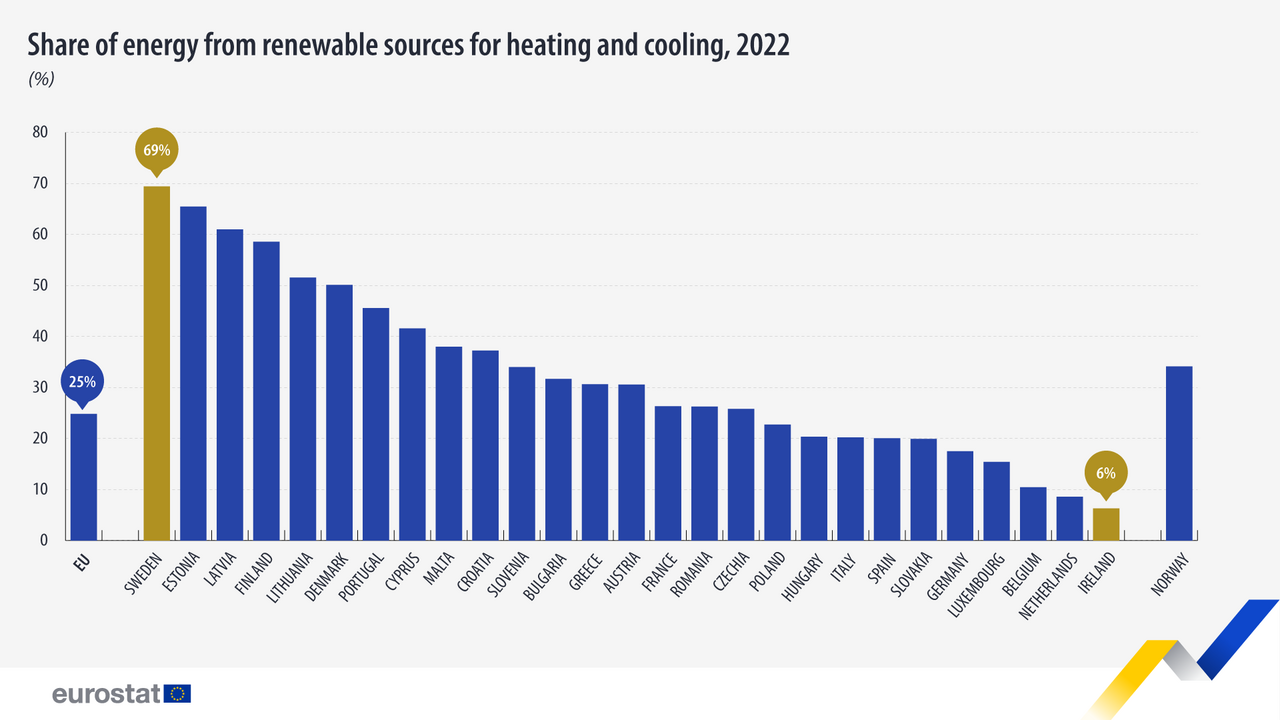Renewable energy for heating and cooling in the EU in 2022
The share of renewable energy sources for heating and cooling in the EU increased to 25% in 2022.
Recent figures published by Eurostat show that 24.8% of total energy use for heating and cooling in the EU came from renewable sources in 2022, a 1.8 percentage point increase from 23.0% in 2021.
Energy for heating and cooling represents around half of the EU’s total gross final energy consumption. In absolute terms, the gross final consumption of renewable energy for heating and cooling in the EU has gradually increased mostly due to the contribution of biomass and heat pumps.
Among the EU Member States, Sweden stood out with 69.3% of the energy used for heating and cooling in 2022 stemming from renewable sources (mostly biomass and heat pumps), followed by Estonia (65.4%) and Latvia (61.0%), which use a large share of biomass. In contrast, in Ireland (6.3%), the Netherlands (8.6%) and Belgium (10.4%), renewable sources contributed the least to heating and cooling.

Over the past decade, the average share of energy from renewables for heating and cooling grew from 18.6% to 24.8% (+6.2%). However, further progress is still needed to meet the new targets introduced by the EU Directive 2023/2413 of 18 October 2023 on the promotion of the use of energy from renewable sources (RED III). This Directive requires EU countries to increase their annual average share of renewables in heating and cooling by at least 0.8% from 2021 to 2025 and by at least 1.1% from 2026 to 2030.
Source
Eurostat. 27 February 2024. https://ec.europa.eu/eurostat/en/web/products-eurostat-news/w/ddn-20240227-2
